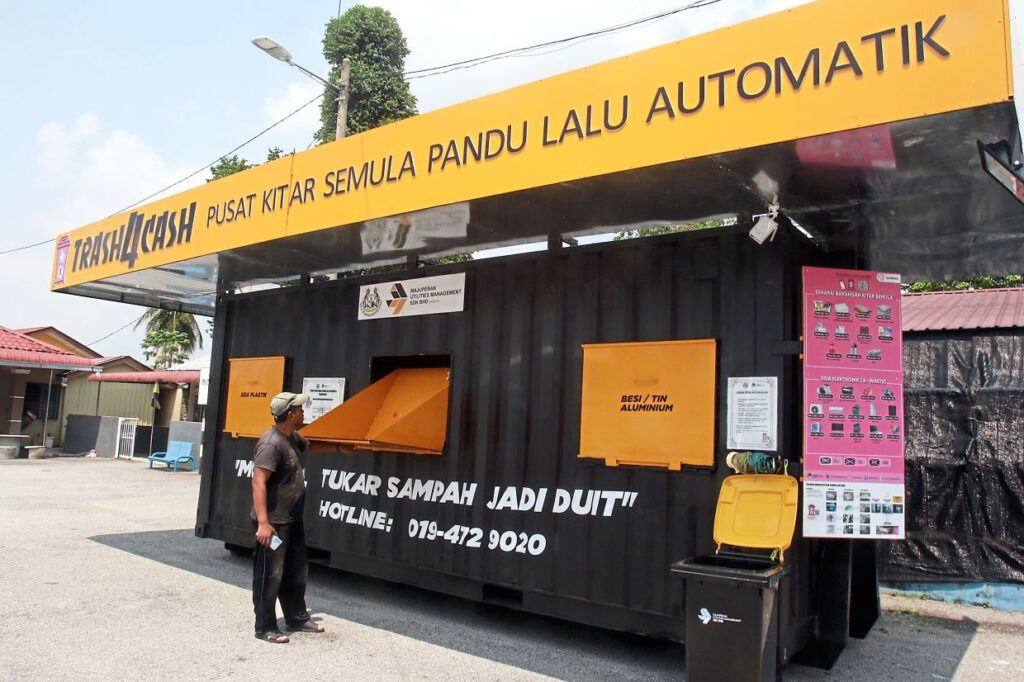
THAT Malay proverb “Sedikit-sedikit, lama-lama jadi bukit” would be a good thing to have in mind when Malaysian cities try to reduce their carbon footprint. It certainly is the little things that are adding up to make a historic city become a little greener.
Ipoh, where the 19th century tin industry put us on the world map even before Malaysia was a country, recently won two awards for its efforts to become a low carbon city.
Ipoh City Council won two Diamond Category awards in 2022’s Low Carbon City Awards given out in February by the Malaysian Green Technology and Climate Change Corporation (MGTC), which is under the Natural Resources, Environment and Climate Change Ministry.
These include the “4 Diamond Recognition Award” in the Low Carbon Urban Zone Category (Central Planning Area) and “5 Diamond Award” in the Low Carbon Partner Category (Perak Urban Transformation Centre, or UTC).
Ipoh mayor Datuk Rumaizi Baharin explains that, among the actions taken by the Ipoh City Council, was upgrading infrastructure to make parts of the city more environment-friendly.
“We’ve changed some of the street lights and lighting systems in our buildings from the conventional ones to LED.”
The manufacture of LED lights is not toxic and they are 100% recyclable; switching over to this energy-saving lighting is helping Ipoh to lower its carbon footprint by one-third, he says.
“We are now using a smart traffic system to manage the traffic flow in the city, which can also lower carbon emission from vehicles,” he says.
In keeping with the increasing popularity of electric vehicles in Malaysia, Ipoh has also set up nine electric charging stations to encourage more city folk to use the environmentally-friendly cars.
“We plan to buy electric motorcycles to be used by our enforcement officers this year,” he adds.
“We believe in the concept of leading by example, and we need to make sure the people are prepared for the changes as we move towards becoming a low carbon city,” he says.
The council is also working with the state Environment Department to monitor Ipoh’s air quality to ensure it does not deteriorate as the city is undergoing modernisation through development.
Collaboration is key in these greening efforts, and Rumaizi says the council has “smart partnerships” with various agencies and companies to achieve its aims.
These include working with Tenaga Nasional Bhd to install solar panels on top of the Perak UTC building previously, and with the Natural Resources, Environment and Climate Change Ministry to set up a rainwater collection system at city properties.
“We have set up the rainwater collection system at the UTC building, the Amanjaya Chicken Market and at the Tanjung Rambutan market to slow the flow of surface runoff and promote efficient use of water.
“The water collected is used to wash the markets and their surrounding areas,” he explains.
“Using solar energy has helped significantly in reducing our carbon footprint,” he adds.
“Apart from lowering emission of greenhouse gases, it also helps the council to save on electricity bills.”
Maintenance cost is also cheaper as solar energy can be used in the long-term.
Other initiatives include pushing 3R (Reuse, Reduce, Recycle) programmes for household waste, and turning idle land into community and urban farming projects.
“Shade trees are also being planted in the city centre to ensure a cooler environment and promote walkability,” he says.
A “walkable city” is one of significant aims of low carbon cities as vehicle emissions from private cars are one of the biggest contributors to global warming.
An obstacle to that in Malaysian cities is that we are accustomed to door to door transport and tend not to use public transport, especially when last mile connectivity is lacking.
This is where the people factor comes in – Rumaizi points out that among the bigger challenges in implementing these green initiatives is changing city folk’s mindset towards them.
“The understanding and acceptance of becoming a low carbon city are still lacking,” he says.
This adds to the other challenges Ipoh faces in becoming more green, such as finances and the need to continue developing the city.
“Our aim for Ipoh to become a low carbon city is in line with the government’s aspiration to see all 154 local governments in the country doing so.
“The main objective of these initiatives is to lower the country’s level of carbon emission, and Ipoh is committed to reducing it by 45% by 2030,” he says.
The Low Carbon City Awards were presented by Natural Resources, Environment and Climate Change Minister Nik Nazmi Nik Ahmad on Feb 20.
In his speech reported by Bernama, Nik Nazmi urged local authorities to set their own direction and suitable approaches to lower carbon emissions and contribute to reducing the impact of climate change on Malaysia.
Everyone at all levels, from district and state to federal, has to work on helping the country achieve greenhouse gas reduction targets set by the National Low Carbon City Masterplan (NLCCM) launched in 2021.
The NLCCM is a complete guide for state and local governments to develop low carbon cities.
“Planning and developing sustainable cities and the transformation to low carbon cities can help develop local green economies, create job opportunities, and attract domestic and international investments,” he said.
The ministry, Nik Nazmi also said, would be engaging with state and local authorities according to zones this year to provide briefings on the implementation of NLCCM.
“This is in line with the ministry’s target to create 200 low carbon zones and 1,000 low carbon partners throughout the country by 2030.
“It is important for the country to remain committed and progressive in tackling climate change by achieving the national aspiration of zero greenhouse gas emissions as early as 2050, subject to the results of the National Long-Term Low Emissions Development Strategy,” he said.
Also present during the ceremony in February were Deputy Minister Datuk Seri Huang Tiong Sii, ministry Secretary-General Datuk Rosli Isa, and Malaysian Green Technology and Climate Change Corporation chief executive officer Shamsul Bahar Mohd Nor.
Source: The Star

